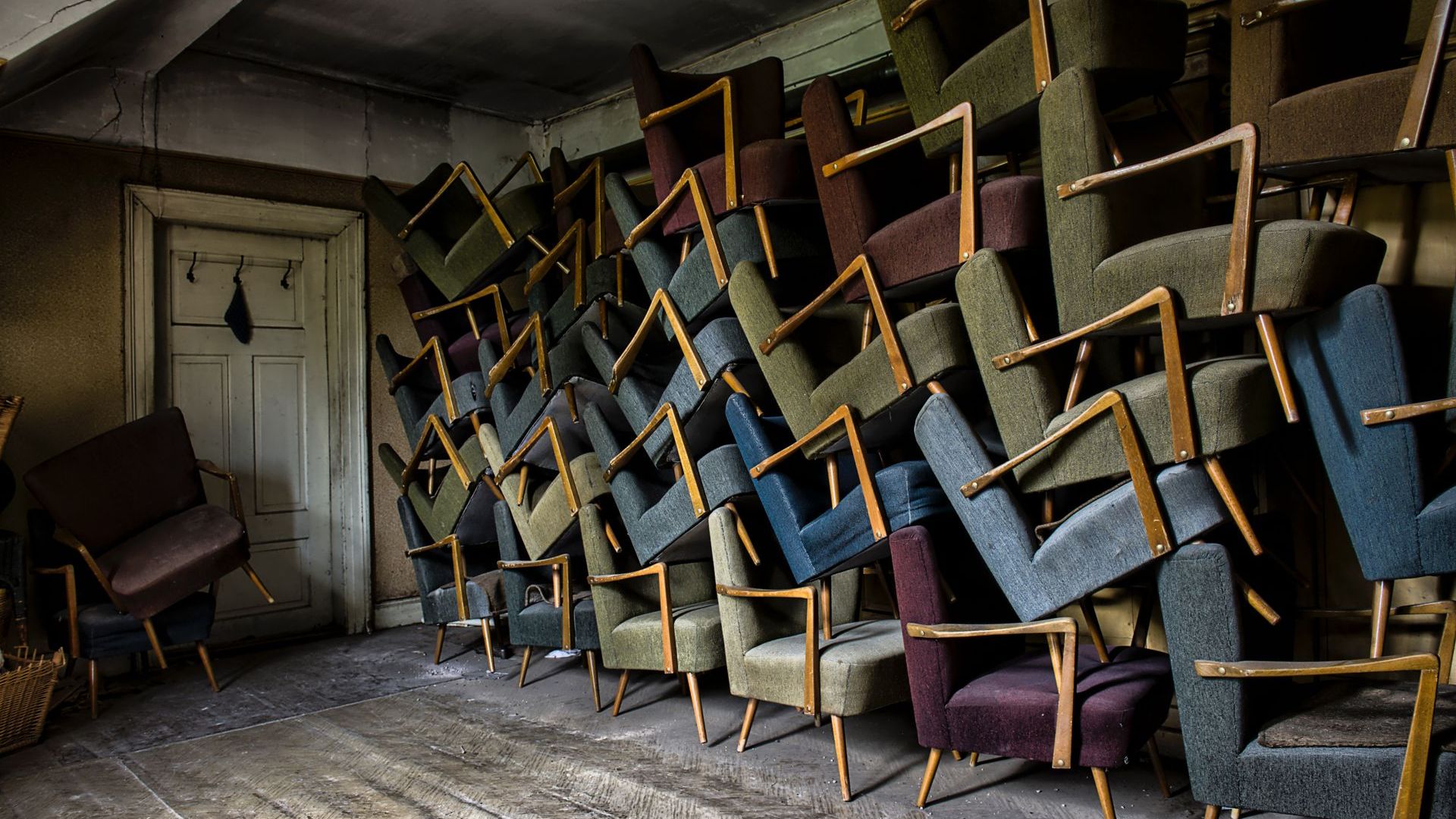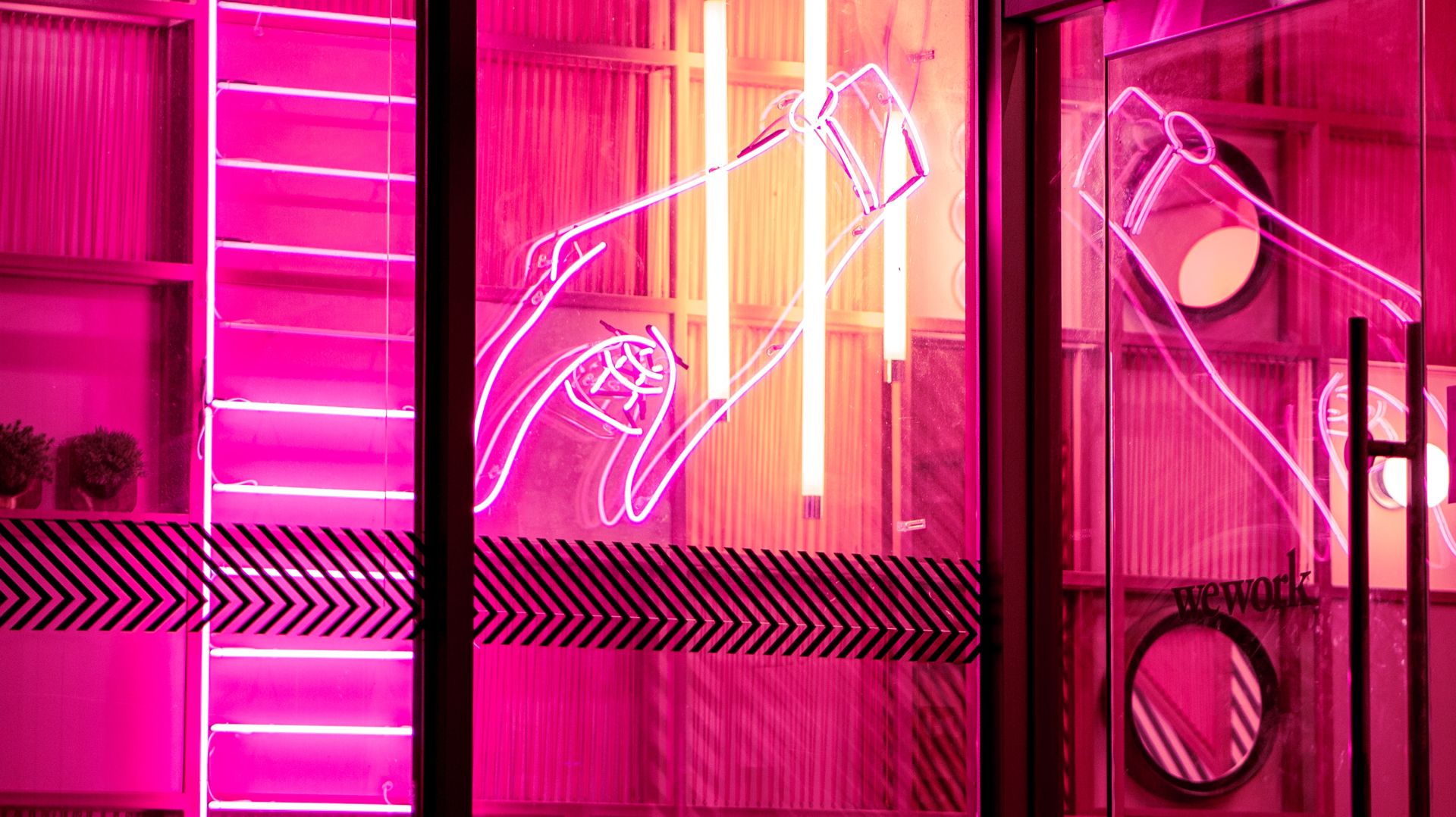When was the last time you saw a shaded sphere in a logo, a photo covered with grunge overlays, or a rap song with just way too many triplets?

Trends come and go all the time. However, it can be painful for a lot of people to see a trend emerge, and eventually take over mainstream media.
Everything starts to look the same, brands end up degrading their identities, artists lose quality and distinctiveness, and media platforms grow annoying; which pretty much explains why trends are looked down upon.
It’s always a great idea to avoid using trends where they don’t belong. When it comes to design, trends provide no strategic value to the job, and make the products vulnerable to indifference from the audience. Plus, they just become annoying to look at.
Although most trends revolve around some really powerful design elements; those elements might not always serve a purpose. Imagine looking up at a flower shop sign that’s styled in grunge. Doesn’t feel too right—right? Grunge-styled typography doesn’t communicate anything right about a flower shop.

Trends can kill your design for a lot of reasons:
- Trends usually offer no strategic value to design. Designing by a trend usually means that your job is inspired by what’s popular or trending, instead of what makes sense or complements the job.
- When trends emerge, they quickly take over media and industries. And if your brand chooses to follow a trend, it loses itself in a sea of all the other brands that have done the same.
- Every creator, business, and organization has a brand. And every brand—organized or unorganized—has a direction. Following a trend because it’s popular means that you’ll be likely to have your brand stray away from the direction that suits it best.
- Depending on what you do with them, trends can get annoying. Remember all the times you’ve seen Trajan get used on a movie poster. Traumatic.
It’s clear that trends can easily ruin what could’ve been an acceptable work of design. So how should you handle trends? Boot them from your workflow altogether?
Although chances are that a design trend will have nothing great to add to a composition; it’s still a design element, and still has something to offer where it fits. After all, trends are just design styles or compositions that happen to have grown really popular.

How Design Trends Originate
Design trends emerge for a lot of reasons. It could be anything from a product becoming really popular to a design style going viral. Every time something comes along and is either really impressive, or gets a lot of attention for some reason; it’s susceptible to becoing a trend. Remember those annoying, 3D globes back from 2000s? People had them in almost every logo and every list paragraph because they were new; they were cool; and computers could now render them really fast.
And oh; memes.

Should You Be Afraid?
Should you be afraid of design trends? Yes, and no.
While trends can easily hurt your design; they’re still just design elements with their own style, place, and context to be used in. And if you try to confirm that—you might prove yourself wrong. There are just so many poorly-done examples of trending design styles, that the nicer ones get buried in the past.

Although if you look at the right places, you’ll find some really good examples of design styles that have now become trends.
Trends aren’t unoriginal or bad by default. They have their own influences that make them them distinct. It’s just that they look really bad when they pass through a lot of unskilled hands.
However, trends can perform just as well as any other design style once you understand how they work.

How To Work With Design Trends
There’s always a chance you might have to work with a trend. Here’s what you can do to keep your design on the right track:
- Know what you’re working with. Every visual style has an origin and a function; so a little research will always help. It’ll be much easier to make decisions once you have a clearer idea of what’s on your screen.
- Look up some good examples of the trend you’re trying to work with. Because trends get worked with by so many people, chances are that you haven’t come across many pieces where a trending design style is used well. When working with a trend, look up pieces that are actually done well. Digging into old and iconic pieces of design can help you understand how a certain trend works.
- Design trends travel through a lot of eyes. And a lot of times, this may mean that a trending design style is percieved with different meanings across communities. It helps to research how a trend has evolved throughout its lifetime, and what it means to people—especially your target demographic.
- Acknowledge the reason you’re working with the trend. Does it have to do with function? Style? Aesthetic? Get the reason down, and do it well. Regardless of how a style is seen, nothing beats well-directed and well-executed design.
- Stick to the fundamentals. No matter what you’re designing, fundamentals stay the same. Due to the sheer volume of examples you’ll come across for any design trend, it’s easy to get influenced by any bad design practices you end up looking at. Although the internet can help you find inspiration, it’s really important to cut the noise and understand what influences are good or aren’t.
- If a trend seems hard to get right, tone it down—or ramp it up. No matter how common a design trend is, it might not work with everything. All design needs balance. If done right, toning things down and subduing those annoying elements can fix things. Alternatively, directing the entire design towards the style can add the consistency it needs.
- No matter what you design—do it right. One of the most common reasons design trends look bad, is that designers make them look crappy. Because so many people try their hands on trending design styles, most of the content you see is bound to be flawed. Always do your homework, and design things right.

What You Need To Watch Out For
Trends are just as brutal as they are annoying. Regardless of how well you’ve designed things, trends can do their own damage if you pick them for the wrong project. Here’s what you should watch out for:
- Design trends are a bad idea for things that revolve around a brand’s visual identity. When you show people something that’s too common, they don’t see it. Brands that are built well, will make you have strong, distinct, and positive feelings. And design trends are the perfect way to ruin that. Trends often feel common, thoughtless, and at least slightly annoying—exactly opposite of what a visual identity needs.
- Every design style—trend or not—has a history. Make sure you know what you’re working with really well; because what’s a cool work of design to you, might end up pushing your target audience away. After all, you wouldn’t advertise high-definition displays with a retro, 8-bit typeface; or, uh—issue a press release in Comic Sans.
- Of all the design styles that have existed throughout the history of mankind, not one fits all. It can be tempting to use trending design styles because they look really cool; or comfortable to give in to a trend because everyone else in the industry is doing it. No matter how safe it may feel, giving in to trends only takes away from design.
- Usually, things turn into trends when people really like them. And designers—regardless of how awesome we are—are people too. And like all other people, we have our own personal tastes and preferences. However, letting too much of that preference seep in through your fingers and onto the screen usually isn’t a good idea. Good strategy makes good design, and letting your (or your client’s) preference influence the design will usually ‘weaken’ it.